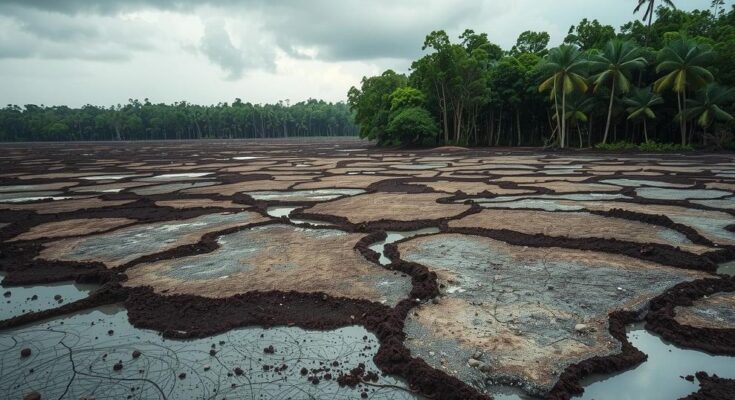Recent research indicates that artisanal gold mining in the Peruvian Amazon has led to more peatland destruction in the last two years than in the previous three decades. This threatens significant carbon emissions and environmental health, demanding immediate protective measures and further research to mitigate irreversible damage.
Recent studies published in Environmental Research Letters reveal that artisanal gold mining in the Peruvian Amazon has caused unprecedented destruction of peatlands, exceeding damage accumulated over the past three decades. This alarming trend highlights a severe threat to both the environment and climate, as these carbon-rich peatlands play a crucial role in sequestering greenhouse gases.
Small-scale gold mining has flourished in the Madre de Dios region, primarily due to gold deposits in the soil. While deforestation from mining has been recognized for its carbon emissions, new findings indicate that the impact on peatlands is far more profound. Research leveraging over 35 years of NASA’s Landsat satellite data shows that more than 550 hectares of peatland have been destroyed recently, releasing an estimated 0.2 to 0.7 million tons of carbon emissions. Over 55% of this degradation has occurred within the last two years alone, surpassing the total damage of previous decades.
The significance of peatlands cannot be overstated, as they store carbon much more densely than forests, with capacities equivalent to seven times their area. The rapid expansion of mining activities has resulted in peatland mining comprising 9% of the region’s total mining output. If this trend persists, it could escalate to 25% by 2027, endangering over 10,000 hectares and potentially releasing up to 14.5 million tons of carbon—analogous to the annual emissions from millions of vehicles.
Discovered in 2012, the peatlands of southern Peru are now facing imminent destruction, as revealed by the very scientists who identified them. Dr. John Householder, the study’s lead author, points out the critical situation: “Mining is spreading fast into these fragile areas because it has become easier to reach these remote mining spots, and there just isn’t enough law enforcement to protect the area. If we don’t slow down the destruction, the damage to the Amazon’s peatlands could be permanent, with serious environmental, social, and economic impacts down the line.”
Dr. Householder emphasizes the urgency of research and protection efforts stating, “What our paper shows is that even within a human generation, it is quite possible that large peat deposits can disappear from the landscape, before science has had a chance to describe them. For those peat deposits that are already known, these research findings are a wake-up call to protect them.”
IOP Publishing, which released this research, is a nonprofit scientific publisher committed to advancing knowledge in physics and environmental science. Their flagship journal, Environmental Research Letters, serves as a crucial platform for disseminating pivotal findings related to the sustainability and preservation of ecosystems.
In summary, artisanal gold mining in the Peruvian Amazon has incited notable damage to peatlands, surpassing historical decades of degradation within the last two years. The destruction of these vital ecosystems poses significant threats to climate regulation and highlights the need for enhanced protective measures. The urgency for further research and stronger law enforcement is paramount to prevent irreversible harm to these carbon reservoirs and mitigate future environmental impacts.
Original Source: www.eurekalert.org




